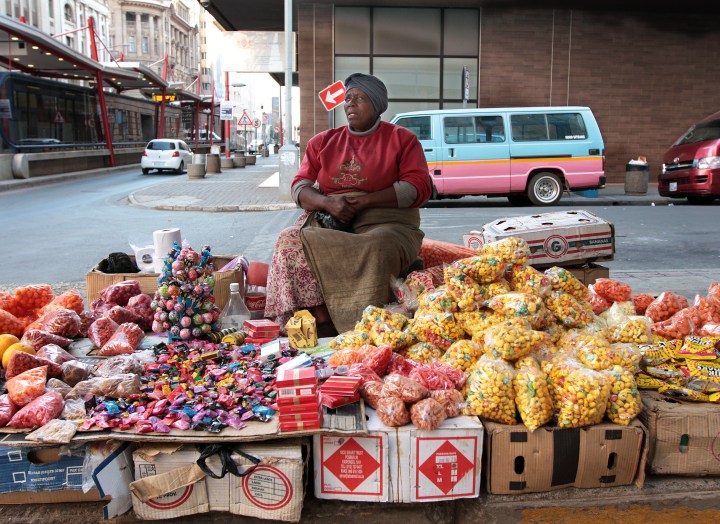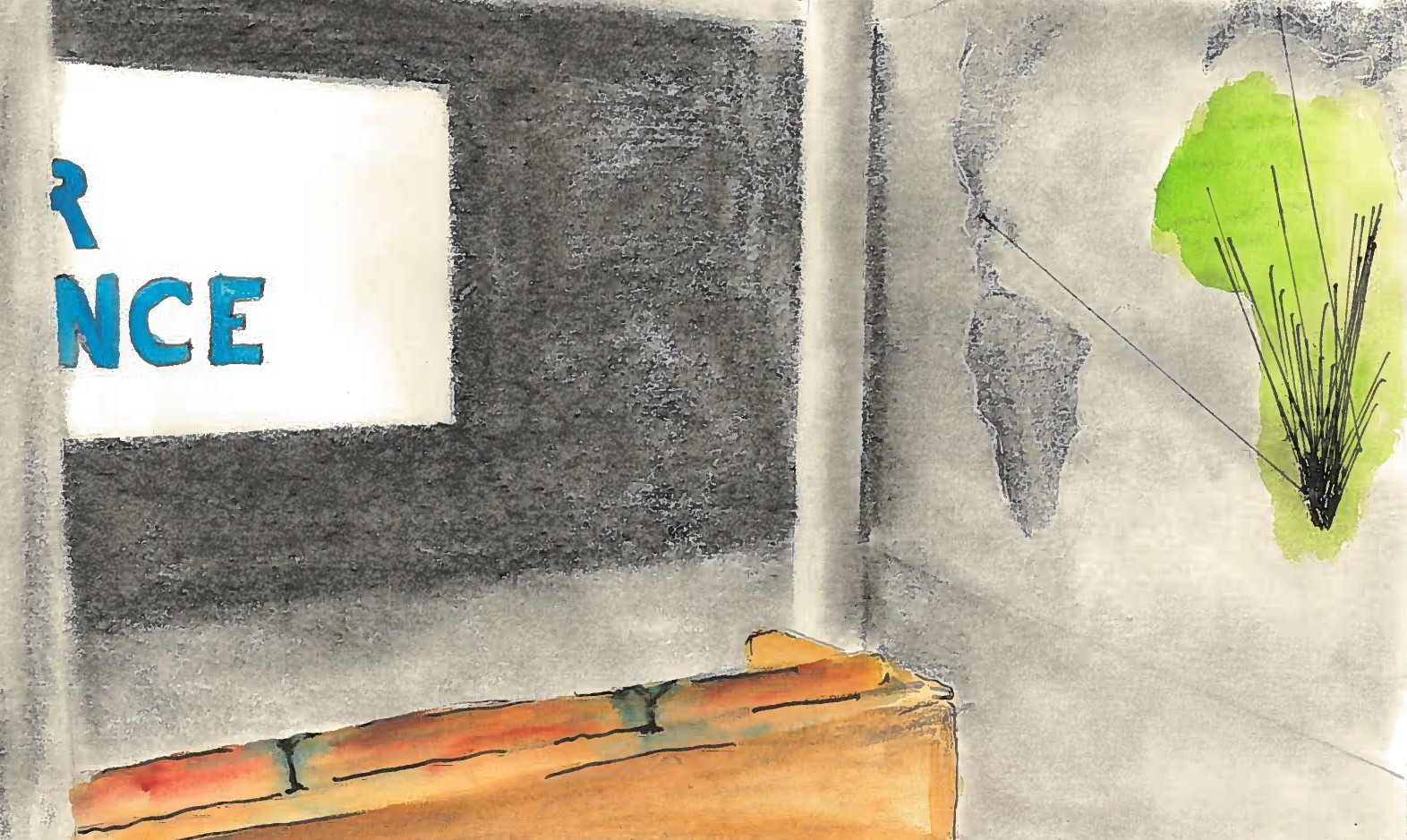MATTERS OF THE ART
The African exhibition chosen for La Biennale di Venezia

Kenyan sociologist Caroline Wanjiku Kihato’s book ‘Migrant Women of Johannesburg: Everyday Life in an In-Between City’ was adapted with work by three other African women into a collaborative project currently on display at the Biennale Architettura in Venice, one of the biggest exhibitions in the world.
In the art world, a biennial (or biennale in Italian) refers to a large international exhibition that takes place once every two years. The oldest and largest biennial is La Biennale di Venezia, which was established in 1895 and is now attended by over half a million visitors.
Ironically, despite being the cultural event that created the concept of a biennial, it has taken place every year since the first Architecture Biennale in 1980, with the focus of the exhibition alternating annually between art and architecture. Until 2019, the Art Biennale was held in odd-numbered years and the Architecture Biennale in even years, but after losing a year to the Covid-19 pandemic, the two have switched.
Since the 1930s, the event has also included music, cinema, and theatre festivals that take place every year, and in 1999, dance was added to the docket.
This year, the 18th International Architecture Exhibition is taking place from 20 May to 26 November at the Giardini, the Arsenale and Forte Marghera. The 2023 exhibition title is The Laboratory of the Future. It has strongly prioritised representation in the choosing of its 89 participants: half of the contributors are female and more than half are from Africa or the African Diaspora. Four such contributors are the co-creators of the interdisciplinary project, You Will Find Your People Here: sociologist Caroline Wanjiku Kihato (Kenya), pianist Mareli Stolp (South Africa), composer Clare Loveday (South Africa) and artist Sedinam Awo Tsegah (Ghana).
You Will Find Your People Here
You Will Find Your People Here is a collaborative work of performance, film, composition and exhibition based on Kihato’s book, Migrant Women of Johannesburg: Everyday Life in an In-Between City, which explored the lives of women from different parts of the continent who came to live in Johannesburg. The film is a piano performance by Stolp of a musical composition which Loveday wrote using migrant women’s testimonials from Kihato’s book. In the performance, viewable online, Stolp combines dissonant, avant-garde piano with storytelling and unsettling vocal utterances to express the experience of the women on whose behalf she speaks.
The physical exhibition showcases three fabric panels designed by Awo Tsegah to depict the alienation of African women. As well as the visual idiom of African women’s fabrics — the East African kanga, the southern African shweshwe and the Ghanaian Kente — the designs are based on data collected by the Wits-Oxford Mobility Governance Lab in 2021 about language diversity, family connections and women’s mobility to Johannesburg.

Panel 1: Welcome to Johannesburg, designed by Awo Tsegah.

Panel 2: Speaking in Tongues, designed by Awo Tsegah.

Panel 3: Family Trees, designed by Awo Tsegah.
You Will Find Your People Here is on display at The Biennale until 23 November as part of the curator’s special project Gender and Geography. Kihato plans to display it in Johannesburg in the future but a date and venue have not yet been confirmed.
It’s interesting and fitting that the project is on display at the Biennale during one of its Architectural years rather than an Art year. It highlights how integrally, the experiences of migrant women in Johannesburg or any other city are related to infrastructure, both cultural and literal.
The creation of space for people
Kihato explains: “What really appealed to us about the Biennale was that we were seeing architecture not just through its fundamentals, through the built environment, through the structure, but actually through the way people engage with the structure. We are trying to change the idea that architecture is this sort of canon about drawings and buildings and the built environment — architecture is the creation of space for people.
“So our exhibition speaks about how migrant women traverse space, geography, the city, how they shape that city, but also how the city shapes them. They bring their shweshwe, the cloth that they would use to carry their children or to wrap around their waist. And we were very deliberate in trying to bring these everyday artefacts to this formal, grand, very European type of architecture because we knew that it would change the space, just like when women come from other parts of the continent into Johannesburg, they changed that space. They bring diversity, colour, different cuisine, and give it a different feeling. These tensions that create the city are an important story about architecture we want to tell.”
The name of the project comes from one of the women in Kihato’s book — who came from the Democratic Republic of the Congo and had to enlist the help of a smuggler to get to Johannesburg. After days of darkness in the back of a van, being told to shut up, they arrived in Hillbrow. She emerged, dazed, and asked where she was, to which her unsympathetic driver simply responded: “You will find your people here.”
‘We wanted to bring this new language of architecture into this quite privileged space to be a little disruptive and make people stop and think.’
This particular quote is a surprisingly positive choice of title for a book or project about the often horrifying and challenging experiences of African migrant women. It shows that Kihato’s exploration of Johannesburg as a cultural melting pot is not purely critical, it is also an expression of appreciation that this diverse space — where no matter where you’re from, you really can find your people — exists.
The other phrase that jumps out in Kihato’s titling is the term “in-between city”, used to describe Johannesburg. It’s a term of her own, inspired by the interviews she did in her research.
When she tried to check up on women she had previously spoken to, time and time again she found that they weren’t certain when they’d be in the city. To them, it was a station, not a destination. It was a passage to get to Europe or the Americas or even Australia, stuck between the future they wanted elsewhere and the past that they had left behind.
The gulf between Africa and the “Western World” is front and centre in Kihato’s work, and unfortunately, in its current exhibiting at The Biennale as well. Kihato points out the hypocrisy of one of her collaborators from Ghana being denied a visa despite having been invited to present her work by the president of the Biennale.
“They will accept our art, but they will not accept us. This is something everyone knows — it was obvious and remains a really sore point for us, because Africans’ art can come, but they’re not welcome. I really don’t know what to do with that.
“This piece is also talking about migration. It’s talking about women’s mobility and movement and the fact that this exhibition as a whole and these women’s voices are here is important because we have to reframe the narrative around migration in Africa, which has always focused on Africans moving to Europe, even though we know that 80% of Africans actually move within the continent. We want to tell that story. Those people who cross the Mediterranean are a fraction, yet that’s what Europeans care about.
“It was really important for us to reframe our mobility within the continent, in these very important cities like Accra, Johannesburg or Nairobi, for example, and also reframe the architectural space.
“We wanted to bring this new language of architecture into this quite privileged space to be a little disruptive and make people stop and think. A lot of people might just hate it, and that’s good, because it means that we’ve made them uncomfortable and we are pushing the agenda further along.” DM
You can contact We’re Watching via tevya@dailymaverick.co.za






















 Become an Insider
Become an Insider
Comments - Please login in order to comment.